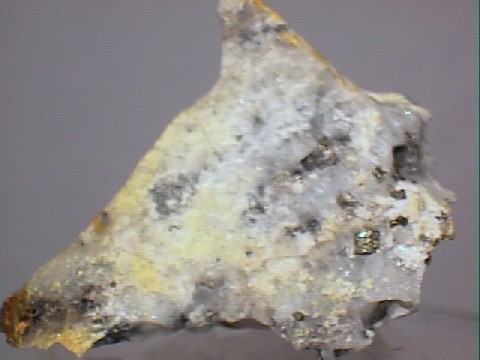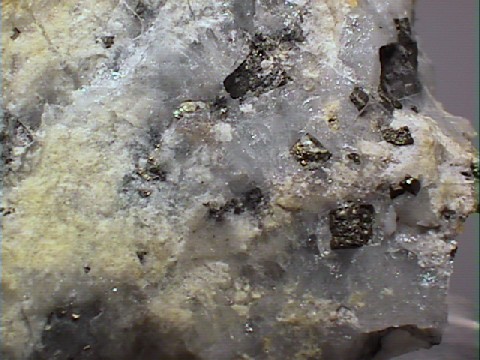 THE
MINERAL EMMONSITE
THE
MINERAL EMMONSITE
- Chemistry: Fe2(TeO3)3 - 2H2O,
Hydrated Iron Tellurite
- Class: Sulfates
- Subclass: Tellurites
- Uses: A very minor ore of tellurium and as mineral specimens.
- Specimens
Emmonsite, which has been known as "
durdenite", is one of only a handful of tellurium minerals.
It forms small crystals that can make attractive green micromountable specimens.
The type locality of Tombstone,
Arizona is probably in doubt as the sample is believed to have actually been the mineral
rodalquilarite.
Subsequent sample from nearby have produced samples of actual emmonsite however.
THE PHYSICAL CHARACTERISTICS OF EMMONSITE:
- Color is a yellowish green.
- Luster is vitreous to dull.
- Transparency: Crystals are translucent to transparent.
- Crystal System is triclinic; bar 1.
- Crystal Habits include small flaky or prismatic crystals as well as mamillary and compact masses.
- Cleavage is perfect in one direction.
- Hardness is 5.
- Specific Gravity is approximately 4.5 - 4.7 (rather heavy for translucent
minerals).
- Streak is pale green.
- Associated Minerals include various other tellurium minerals such
rodalquilarite,
mackayite,
schmitterite
and other
tellurates and tellurites
Also associated with
native tellurium,
quartz and
cerussite.
- Notable Occurrences are limited to the Moctezuma Mine, Moctezuma, Sonora,
Mexico; the type locality of Tombstone,
Arizona; Cripple Creek, Colorado; Nevada and New Mexico, USA and Honduras.
- Best Field Indicators are locality, color, density and cleavage.
 THE
MINERAL EMMONSITE
THE
MINERAL EMMONSITE


